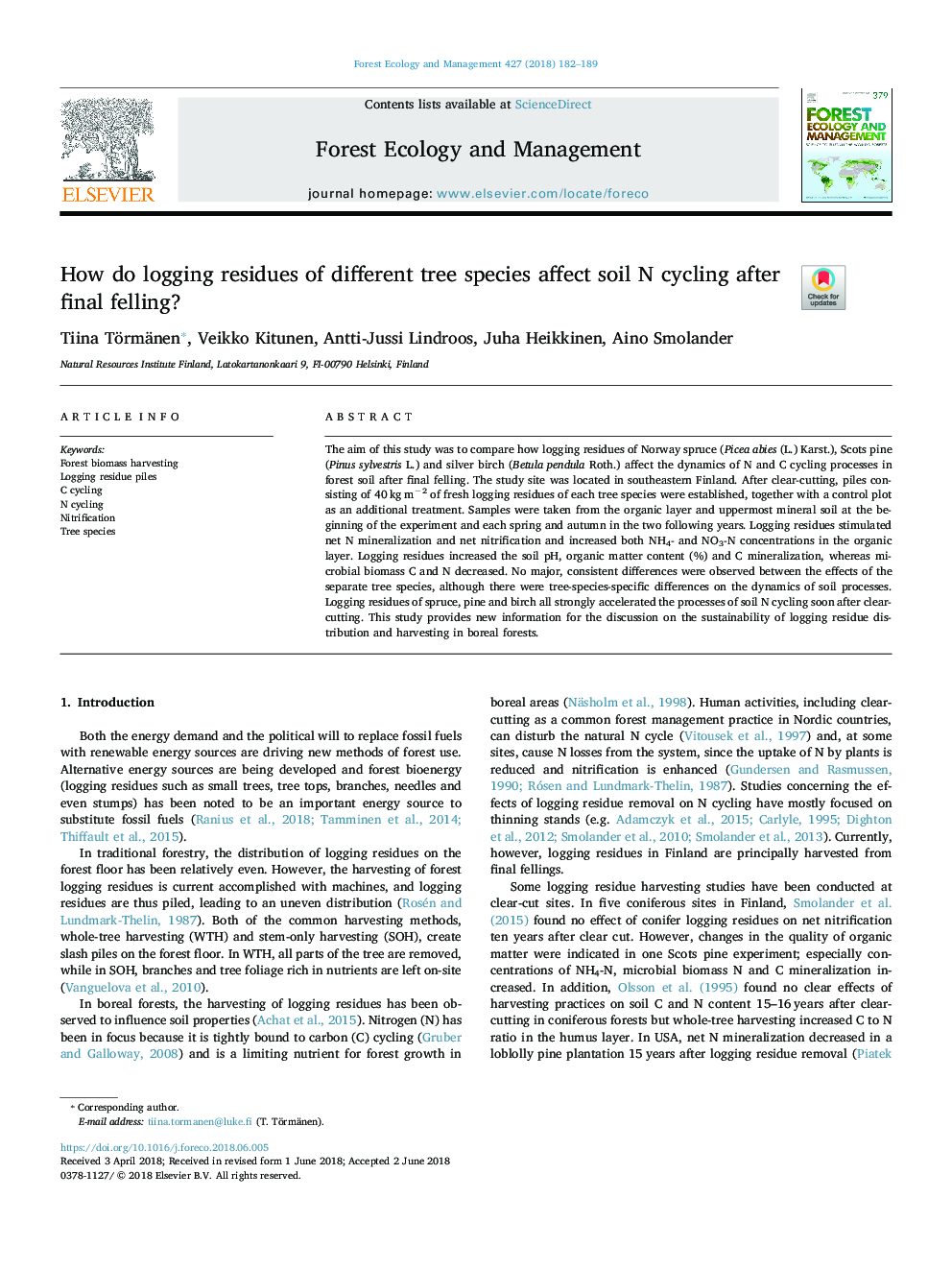| Article ID | Journal | Published Year | Pages | File Type |
|---|---|---|---|---|
| 6541508 | Forest Ecology and Management | 2018 | 8 Pages |
Abstract
The aim of this study was to compare how logging residues of Norway spruce (Picea abies (L.) Karst.), Scots pine (Pinus sylvestris L.) and silver birch (Betula pendula Roth.) affect the dynamics of N and C cycling processes in forest soil after final felling. The study site was located in southeastern Finland. After clear-cutting, piles consisting of 40â¯kgâ¯mâ2 of fresh logging residues of each tree species were established, together with a control plot as an additional treatment. Samples were taken from the organic layer and uppermost mineral soil at the beginning of the experiment and each spring and autumn in the two following years. Logging residues stimulated net N mineralization and net nitrification and increased both NH4- and NO3-N concentrations in the organic layer. Logging residues increased the soil pH, organic matter content (%) and C mineralization, whereas microbial biomass C and N decreased. No major, consistent differences were observed between the effects of the separate tree species, although there were tree-species-specific differences on the dynamics of soil processes. Logging residues of spruce, pine and birch all strongly accelerated the processes of soil N cycling soon after clear-cutting. This study provides new information for the discussion on the sustainability of logging residue distribution and harvesting in boreal forests.
Related Topics
Life Sciences
Agricultural and Biological Sciences
Ecology, Evolution, Behavior and Systematics
Authors
Tiina Törmänen, Veikko Kitunen, Antti-Jussi Lindroos, Juha Heikkinen, Aino Smolander,
